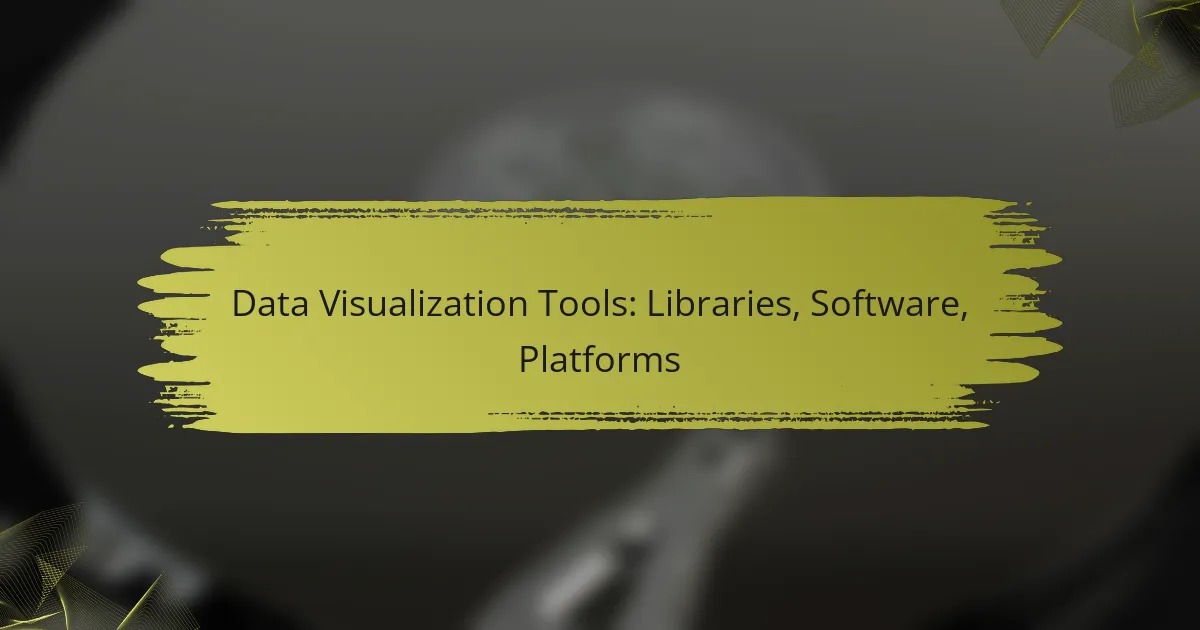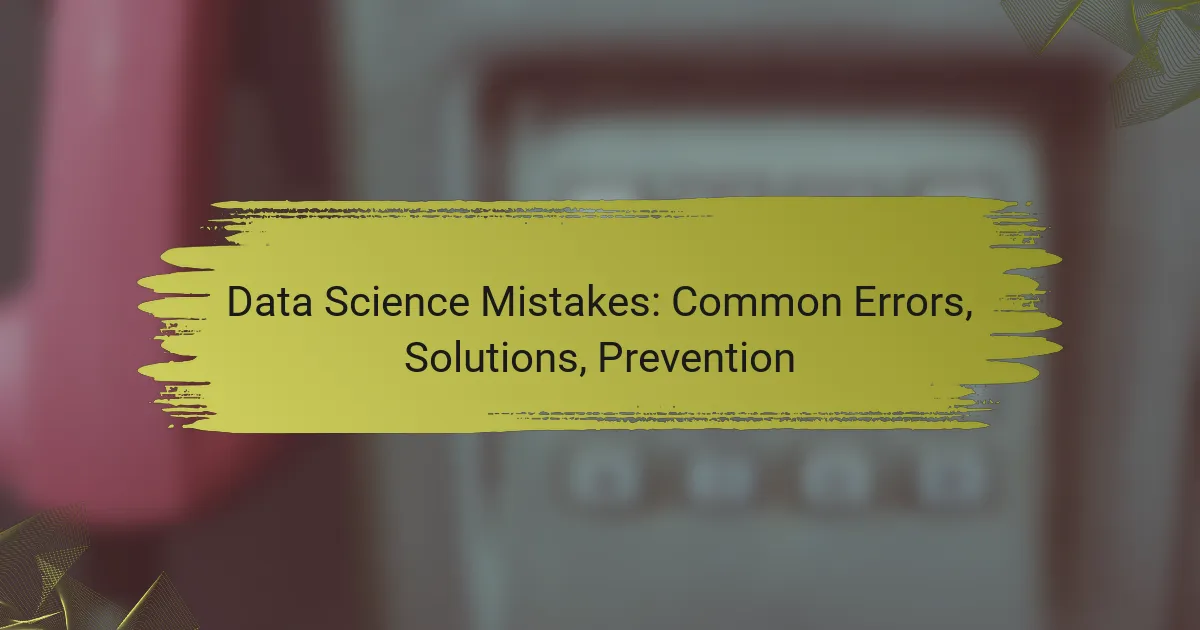Data visualization tools play a crucial role in transforming complex datasets into clear and interactive visual formats, enabling businesses to make informed decisions. With a variety of libraries, software, and platforms available, it’s essential to choose the right tool based on functionality, ease of use, and customization options to suit your project requirements. Prioritizing user-friendliness and integration capabilities will enhance your overall data analysis experience.
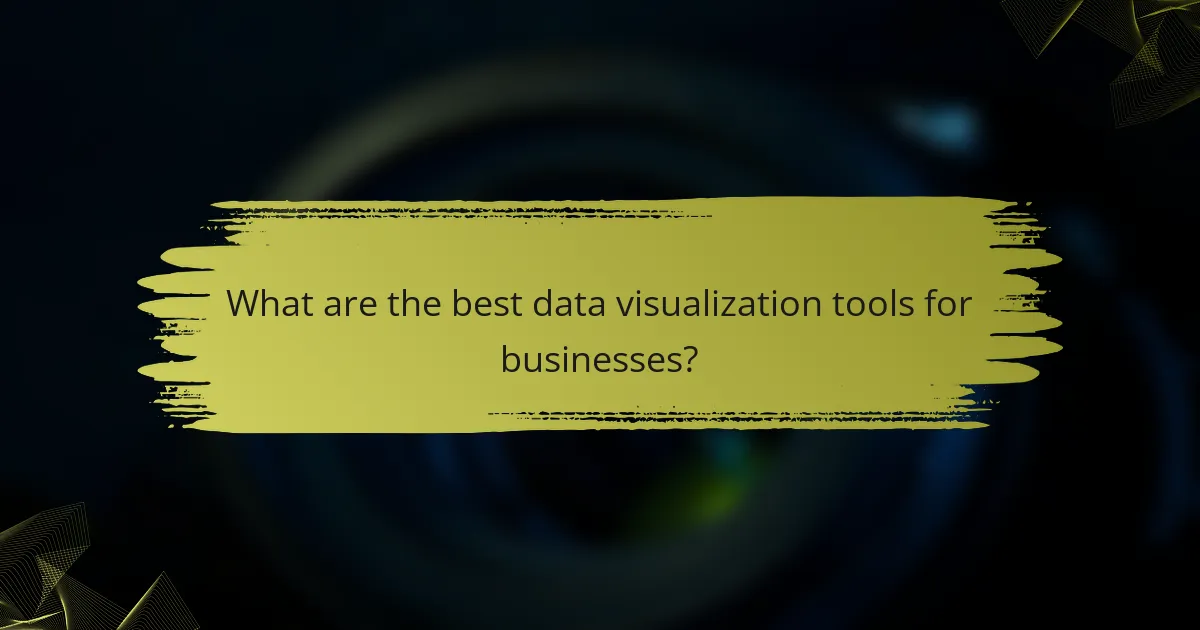
What are the best data visualization tools for businesses?
The best data visualization tools for businesses include software and platforms that enable users to create interactive and insightful visual representations of data. These tools help organizations make data-driven decisions by simplifying complex information into understandable formats.
Tableau
Tableau is a leading data visualization tool known for its ability to create interactive and shareable dashboards. It connects to various data sources and allows users to drag and drop data elements to generate visualizations quickly.
Consider Tableau if your business requires advanced analytics and real-time data updates. Its pricing can vary, typically starting from a few hundred dollars per user annually, making it suitable for medium to large enterprises.
Power BI
Power BI is a Microsoft product that integrates seamlessly with other Microsoft services, making it ideal for businesses already using tools like Excel or Azure. It offers a user-friendly interface and powerful data modeling capabilities.
This tool is cost-effective, with a free version available and a pro version priced at around $10 per user per month. Power BI is particularly useful for organizations seeking to leverage existing Microsoft infrastructure for data analysis.
Google Data Studio
Google Data Studio is a free tool that allows users to create customizable reports and dashboards using data from various Google services and third-party sources. Its collaborative features enable multiple users to work on reports simultaneously.
This platform is best for businesses looking for a no-cost solution that integrates well with Google Analytics and Google Sheets. However, it may not offer the advanced features found in paid tools, making it suitable for small to medium-sized businesses.
Qlik Sense
Qlik Sense is a self-service data visualization tool that emphasizes associative data modeling, allowing users to explore data freely. It provides a robust analytics engine and supports a wide range of data sources.
Qlik Sense is ideal for businesses that need a flexible and scalable solution. Pricing typically starts at several hundred dollars per user annually, which can be a consideration for budget-conscious organizations.
Looker
Looker is a data platform that focuses on business intelligence and analytics, offering a unique modeling language called LookML. This allows users to define data relationships and create custom metrics easily.
Looker is particularly beneficial for companies that require deep data integration and custom reporting capabilities. Its pricing is generally on the higher side, making it more suitable for larger enterprises with significant data needs.
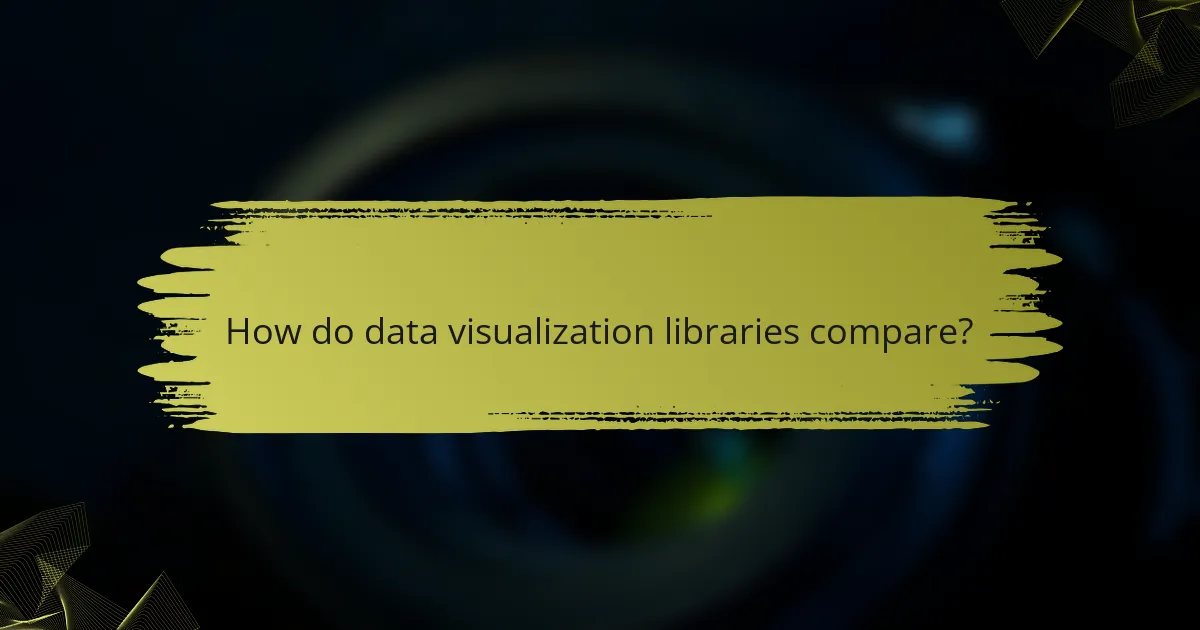
How do data visualization libraries compare?
Data visualization libraries differ significantly in terms of functionality, ease of use, and customization options. Choosing the right library depends on your specific project needs, technical expertise, and the type of visualizations you want to create.
D3.js
D3.js is a powerful JavaScript library that allows for complex and highly customizable visualizations by manipulating the Document Object Model (DOM). It supports a wide range of data formats and provides extensive control over the final output, making it ideal for developers who need tailored solutions.
However, D3.js has a steep learning curve and requires a solid understanding of JavaScript and web standards. For simple visualizations, it may be overkill, so consider your project’s complexity before choosing D3.js.
Chart.js
Chart.js is a user-friendly JavaScript library that simplifies the process of creating responsive charts. It supports various chart types, including line, bar, and pie charts, making it suitable for quick and straightforward data visualizations.
This library is great for beginners due to its simplicity and ease of integration. However, it may lack the advanced features and customization options that more experienced developers might require for complex projects.
Plotly
Plotly is a versatile library that supports both JavaScript and Python, making it suitable for a wide range of applications. It excels in creating interactive and publication-quality graphs, which are useful for data analysis and presentations.
While Plotly offers a rich set of features, it can be resource-intensive, especially for large datasets. Users should weigh the benefits of interactivity against performance considerations when selecting Plotly for their projects.
Highcharts
Highcharts is a commercial library that provides a wide array of chart types and is known for its ease of use and beautiful visual output. It is particularly popular among businesses for creating dashboards and reports due to its professional appearance and extensive documentation.
While Highcharts is free for personal use, commercial applications require a license. This cost should be factored into your decision, especially if you are working on a budget or for a non-profit organization.
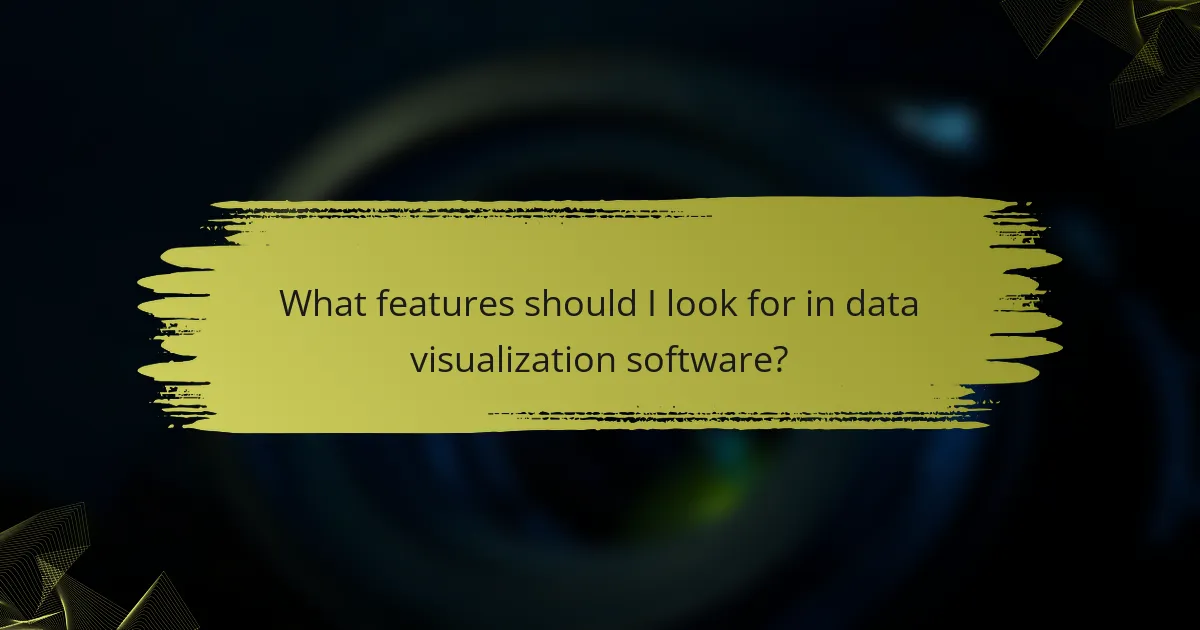
What features should I look for in data visualization software?
When selecting data visualization software, prioritize user-friendliness, integration capabilities, customization options, and real-time data processing. These features ensure that the tool meets your specific needs and enhances your data analysis experience.
User-friendly interface
A user-friendly interface is essential for effective data visualization software. Look for intuitive navigation, clear labeling, and drag-and-drop functionality that allows users to create visualizations without extensive training. A well-designed interface can significantly reduce the time needed to generate insights from data.
Consider tools that offer templates or guided workflows, which can help users quickly understand how to use the software. This is particularly beneficial for teams with varying levels of technical expertise.
Integration capabilities
Integration capabilities determine how well the software connects with other data sources and tools. Choose software that can easily integrate with databases, cloud services, and other analytics platforms to streamline your workflow. This ensures that you can pull in data from various sources without manual intervention.
Check for compatibility with popular tools such as Excel, SQL databases, and APIs. A robust integration feature can save time and reduce errors by automating data updates and synchronization.
Customization options
Customization options allow users to tailor visualizations to meet specific needs. Look for software that offers a variety of chart types, color schemes, and layout configurations. This flexibility enables you to create visuals that effectively communicate your data story.
Additionally, consider whether the software allows for custom branding or the inclusion of annotations and interactive elements. These features can enhance audience engagement and make your presentations more impactful.
Real-time data processing
Real-time data processing is crucial for organizations that rely on up-to-date information. Choose software that supports live data feeds, enabling you to visualize changes as they occur. This is particularly important for industries like finance or e-commerce, where timely insights can drive decision-making.
Evaluate the software’s performance in handling large datasets and its ability to refresh visualizations quickly. Tools that can process data in low latency (within seconds) will provide a significant advantage in fast-paced environments.
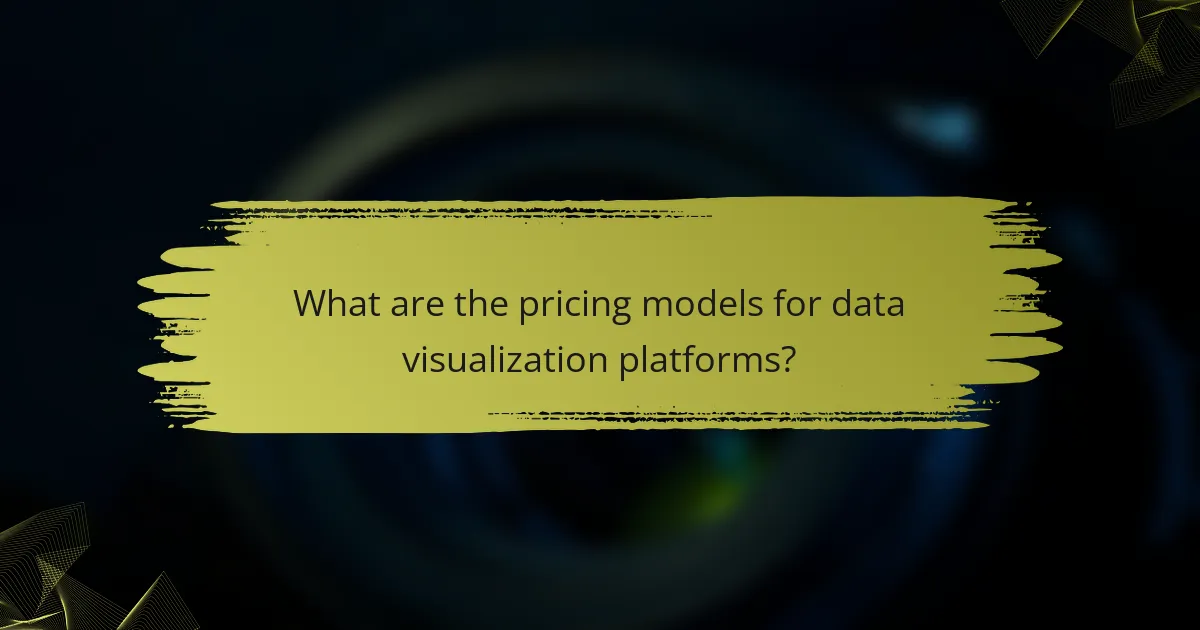
What are the pricing models for data visualization platforms?
Data visualization platforms typically use several pricing models, including subscription-based pricing, one-time purchases, and freemium models. Each model has its own advantages and considerations, making it essential to choose one that aligns with your budget and usage needs.
Subscription-based pricing
Subscription-based pricing is a common model where users pay a recurring fee, often monthly or annually, to access the software. This model usually includes updates, support, and additional features as they are released. Prices can range from low tens to several hundred dollars per month, depending on the platform’s capabilities and user tiers.
When considering subscription options, evaluate the features included at each pricing tier. Some platforms may offer basic functionalities at a lower price while charging more for advanced analytics or collaboration tools. Be mindful of cancellation policies and whether the service locks you into a long-term contract.
One-time purchase
One-time purchase models require users to pay a single upfront fee for lifetime access to the software. This can be appealing for those who prefer not to deal with ongoing payments. Prices for one-time licenses can vary widely, typically ranging from a few hundred to several thousand dollars, depending on the software’s complexity and target audience.
While this model eliminates recurring costs, consider the potential need for future upgrades or support, which may incur additional fees. Ensure you understand what is included in the purchase, such as updates and customer service, to avoid unexpected expenses later.
Freemium models
Freemium models offer basic features for free, allowing users to test the software before committing to a paid plan. This model can be beneficial for individuals or small teams looking to explore data visualization tools without financial risk. However, advanced features, higher data limits, or additional support typically require a paid upgrade.
When using freemium platforms, be aware of limitations that may hinder your projects, such as watermarked outputs or restricted data sets. Assess whether the free version meets your needs before upgrading, and compare the costs and benefits of different paid tiers to find the best fit for your requirements.
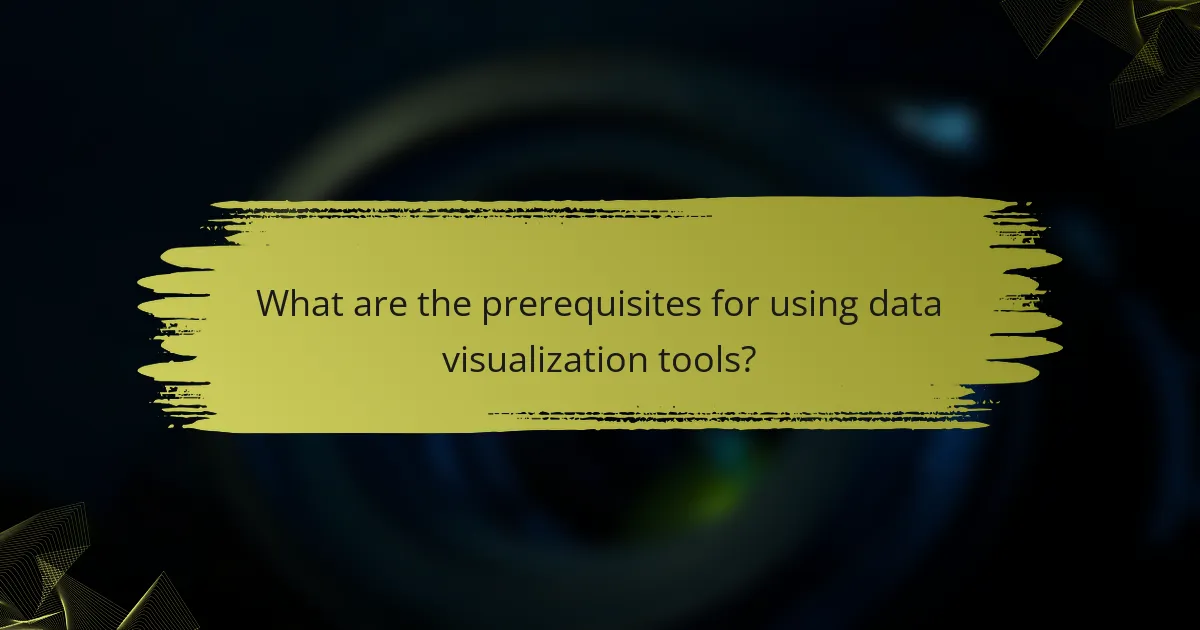
What are the prerequisites for using data visualization tools?
To effectively use data visualization tools, users should possess a foundational understanding of data analysis, familiarity with the specific tools, and a grasp of the data types they will be working with. These prerequisites ensure that users can create meaningful visualizations that accurately represent the underlying data.
Basic data analysis skills
Basic data analysis skills are essential for anyone looking to utilize data visualization tools effectively. Users should be comfortable with concepts such as data cleaning, statistical analysis, and interpretation of results. This foundational knowledge allows for better decision-making when selecting the right visualization techniques.
Understanding key metrics and data relationships is crucial. For instance, knowing how to calculate averages, medians, and standard deviations can help in determining which visualizations best represent the data. Familiarity with data types, such as categorical versus continuous data, also influences the choice of visualization.
To enhance data analysis skills, consider practicing with sample datasets and using tools like Excel or Google Sheets to perform basic analyses. Online courses or tutorials focused on data analytics can also provide valuable insights and techniques that improve proficiency in data visualization.
